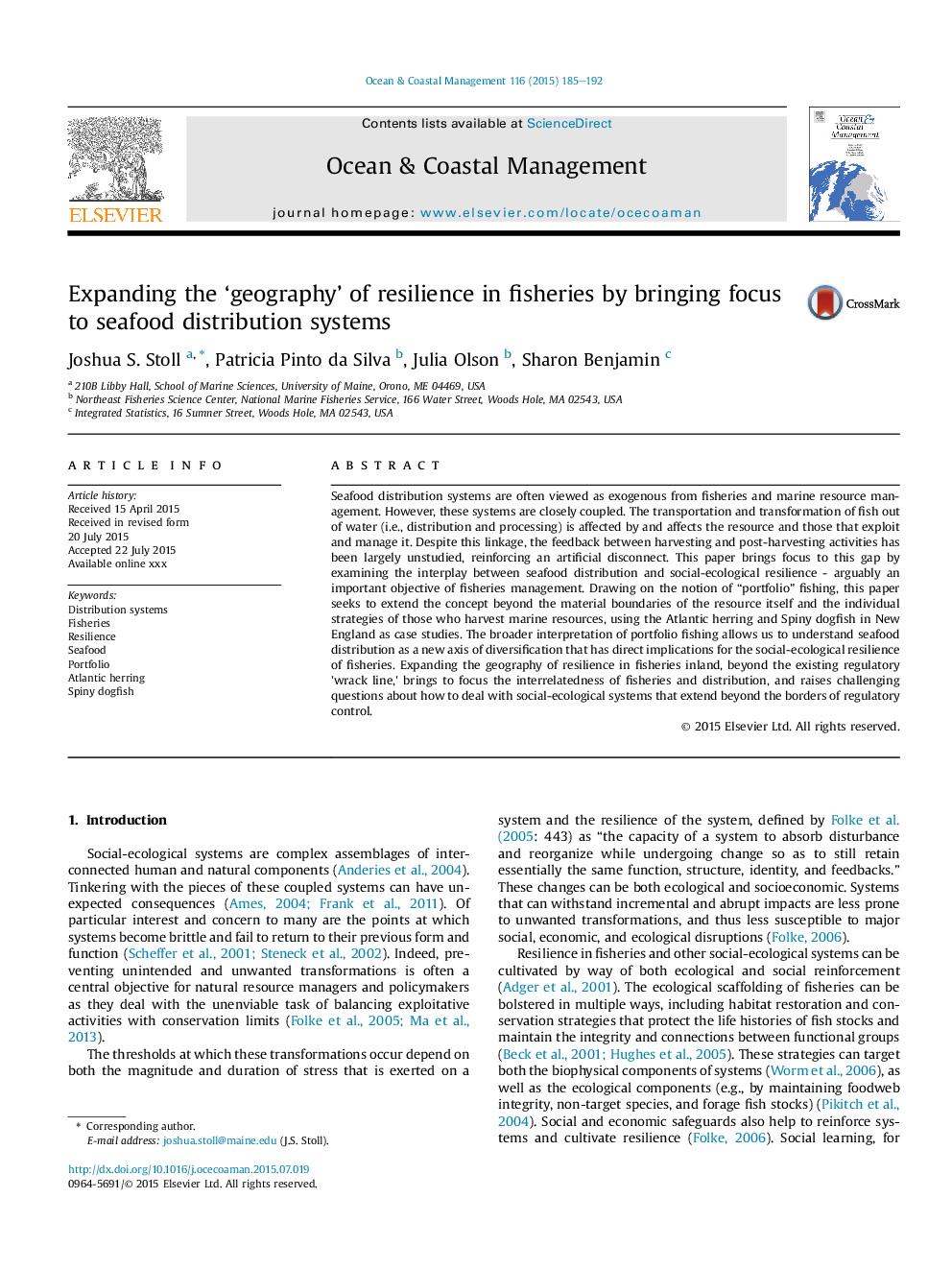| Article ID | Journal | Published Year | Pages | File Type |
|---|---|---|---|---|
| 8061360 | Ocean & Coastal Management | 2015 | 8 Pages |
Abstract
Seafood distribution systems are often viewed as exogenous from fisheries and marine resource management. However, these systems are closely coupled. The transportation and transformation of fish out of water (i.e., distribution and processing) is affected by and affects the resource and those that exploit and manage it. Despite this linkage, the feedback between harvesting and post-harvesting activities has been largely unstudied, reinforcing an artificial disconnect. This paper brings focus to this gap by examining the interplay between seafood distribution and social-ecological resilience - arguably an important objective of fisheries management. Drawing on the notion of “portfolio” fishing, this paper seeks to extend the concept beyond the material boundaries of the resource itself and the individual strategies of those who harvest marine resources, using the Atlantic herring and Spiny dogfish in New England as case studies. The broader interpretation of portfolio fishing allows us to understand seafood distribution as a new axis of diversification that has direct implications for the social-ecological resilience of fisheries. Expanding the geography of resilience in fisheries inland, beyond the existing regulatory 'wrack line,' brings to focus the interrelatedness of fisheries and distribution, and raises challenging questions about how to deal with social-ecological systems that extend beyond the borders of regulatory control.
Related Topics
Physical Sciences and Engineering
Earth and Planetary Sciences
Oceanography
Authors
Joshua S. Stoll, Patricia Pinto da Silva, Julia Olson, Sharon Benjamin,
